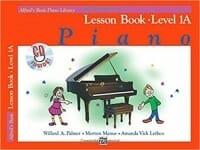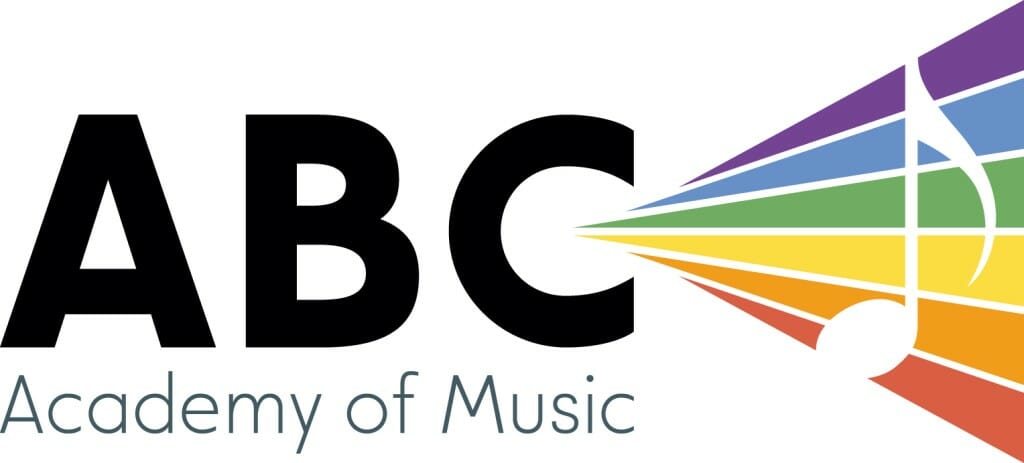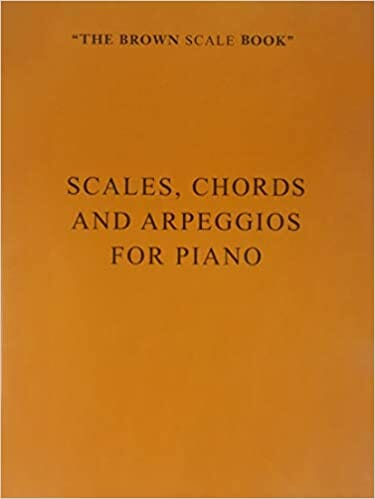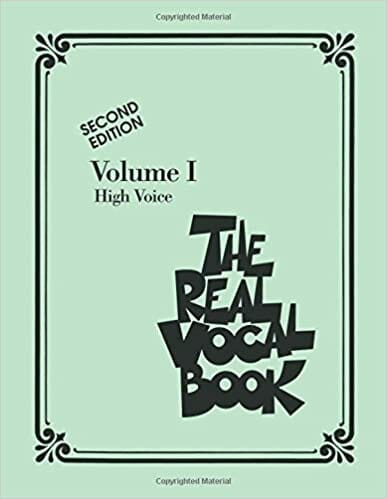B.Mus (Humber) in-progress
Adina is a singer-songwriter based in Toronto completing her Bachelor of Music degree at Humber College in vocal performance. Trained classically in piano since the age of 5, she has branched out into pop and jazz as well.
Vocally she is well-versed in many genres including jazz (she loves to scat!), musical theatre, pop, singer-songwriter, country, R&B, and acappella. She has 7 years of choir experience in both chamber and jazz styles. Adina has been writing and singing original songs since the age of 12, and has two singles as well as an EP out on all platforms under the artist name Adina V.
She has performed all across southern Ontario singing with the Toronto All-Star Big Band, as well as at various venues in the GTA with her own jazz duos and trios. As a member of the Cawthra Park Chamber Choir she performed at Roy Thompson Hall with the TSO for two years in a row. At Humber College she is part of the Vocal Jazz Ensemble led by Lisa Martinelli; this group performs advanced repertoire at events like the Ontario Vocal Jazz Festival.
Adina has been teaching music for the past 7 years and loves helping students meet their personal goals while fostering a love of music that lasts forever!
Get to know Adina…Beyond the Bio!
Hobbies: reading, puzzles, video games, painting
Musical Influences: Ella Fitzgerald, Nancy Wilson, Doris Day, Joni Mitchell, Taylor Swift, John Mayer
Favourite Food: Pad Thai
Least favourite food: eggplant
Favourite music: Indie rock and folk
Favourite song: All I Need by Jacob Collier ft. Mahalia & Ty Dolla $ign
Favourite movie: Matilda
Favourite movie music: The Pirates of the Caribbean theme
Favourite Musical: Dear Evan Hansen or The Last Five Years
Best Quote from your teacher: “It’s an amazing and wonderful experience to be able to be intentional about, in the moment, making music”
Favourite Quote: “Even as we are, we are becoming”
Favourite Book: The Girl With the Dragon Tattoo trilogy – Stieg Larsson
Best thing about teaching at ABC: Sharing and fostering a love of music with students of all ages
Latest Homework from Adina
Is Adina Your Teacher?
Sign up now to get your weekly assignments delivered, and never lose your homework sheet again!
Sunday, February 7, 2021
Great work this week everyone!
Emet
Please play F major triads as you warmup this week – we have moved on from the D minor ones. When we play triads we start in root position and go all the way up to the next root position (so not only playing to second inversion). Play these hands separately and try solid as well as broken.
Hunting Song – In the first half of this song LH moves up into the treble clef to play with RH. The way this is notated is that RH’s notes have stems going up, and LH’s notes have stems going down. Please follow the fingering carefully. Notice how in the second half of the song RH is playing F major triads in varying inversions. Once notes and rhythms have been learned, you can go ahead and add dynamics and play through the entirety of the form (so 1st half, 2nd half with repeats, then D.C. al fine). The ritardando at the Fine means a gradual slow down – it helps add emphasis to an ending.
Hey Jude – In the chorus, please focus on holding LH’s half notes for the full 2 beats each – what will help with this is if RH also can be more legato. The chorus should sound just as grounded and legato as the verse. You can start practicing the 4th page as well this week – for the coda, watch the RH slur articulation. Think of the way they sing “better” in the song; there should be a little lift after each 2 notes. Once all notes and rhythms are comfortable, you absolutely can go ahead and play through the form with the repeats and D.S., coda, etc. We will try improvising in that ending section next week!
Nathalia
This week for your warmup let’s put the C major scale hands together. Both hands’ finger 3s will line up on the E and the A.
Bye, Bye Love – Let’s try playing the first page hands together! Notice how when RH and LH do play together, they are either doing the same rhythms or RH is simply holding whole notes. Whenever RH has intervals, please double check you are playing the correct note on the top/bottom, since sometimes they get flipped. 2nd page we will still keep hands separately, however LH should now also read the chorus section (bar 18 until the 1st ending). Bar 19 specifically has a trickier rhythm: try clapping and saying the counting before playing it. The rhythm should be 1+2+3+4+ with bolded beats being where you clap/play. LH low F shows up a lot in the piece, so try memorizing what that looks like on the staff (just under the bottom line).
Kollel
This week our scale is A major, 2 octaves hands together. The saying for the order of sharps is Father Charles Goes Down And Ends Battle, so if A major has 3 sharps they will be F, C, and G. Play the scale a little slower than you might like just to solidify fingering.
Pachelbel’s Canon – This piece uses one chord progression which repeats every single phrase – no matter how complex the LH part may look, the bottom note every two beats will always be the root of the chord. The progression is D-A-Bm-F#m-G-D-G-A, with all chords being major except B and F# minor. Think of this progression while you are reading the notes, as it will help a lot. Please play lines 1-2 hands together, and as the week goes on also try lines 3-4 hands together. For lines 3 and 4 assess LH’s interval patterns before jumping in and playing it. Whenever there is a big jump within a chord, use the pedal to help you connect. Ideally this whole piece is played with pedal, so integrate it as soon as you are comfortable (in lines 1-2 would be a good place to start).
Etude in G – Awareness to the staccatos even as you’re playing hands together is very important; make sure that beat 3 is just as staccato as beat 2, and the endings especially should be crisp. LH please make sure you’re in the correct octave! In bar 15 please note the second time the C comes around it’s still sharp. A spot to isolate a few times before playing the piece through is the last 2 bars – just to smooth out the transition so the ending can be strong.
Tuesday, February 9, 2021
Hello! I’m really enjoying hearing everyone’s progress.
Ken
As a warmup, let’s continue playing all our triads (so 3 notes in skips played all together) from C major all the way up the white keys until we get to C major again. As you do this, listen to whether the triad is major, minor, or the new word we learned today: diminished.
The Bubble – Please keep practicing this piece for one more week; I think you can speed this one up a bit more! Remember that even when we play faster, the counting still applies (so half notes are still 2 beats, dotted half notes are 3 beats, etc.). For the ending only go as fast as you can play the hands together – also LH’s very last interval has a low G as the bottom note.
Please clap through the exercises on page 10 using the 1 “and” 2 “and” counting we learned for eighth notes before playing any of the following pieces:
Skip to My Lou – Please pay extra attention to the last line in this song and make sure the hands are only playing together when it’s notated. Work to make the difference between staccatos and legatos more distinct.
Leftover Popcorn – In this piece, the staccatos are very important since they symbolize the “popcorn”. Only go as fast as you can comfortably play all eighth notes in the same tempo as quarter notes. As always, please make sure you’re holding half notes the full two counts!
Steve
Mr. Haydn’s Theme – The bars to pay extra attention to in this little song are number 3-5: RH look for whether the melody moves in steps or skips, and if you’re ever not sure you can always use your sayings (Every Good Boy Deserves Fudge and FACE in the space). Go as slow as you need to so you can really double check each note.
My Daydream – Let’s play this piece hands separately to start. RH has the more involved part since it plays the melody – again noticing your steps versus skips is super helpful. Take reading the song one line at a time – you may notice some lines repeat! LH your part is mostly dotted half notes, so if you do find it easy and you feel comfortable later in the week you may try all or part of the piece hands together.
Gabe
Canon in D – Before beginning this piece, please remind yourself of the D major key signature: F# and C#. Please make sure that for the first phrase (which comes back around later in the song) you are using both hands to play those intervals – it will be easier I promise! Second last bar RH should use finger 2 on the C#; we tend to avoid using our thumb on the black keys where possible.
Theme from Don Giovanni – Let’s still keep this piece hands separately for this week. The main area of focus is the last 2 lines (bar 15 and 16 especially). It’s extremely important to use the written fingers – by tucking and using finger 1 on the G in bar 16, it sets the rest of the fingers up perfectly for the remaining notes. Keep saying the counting as you play! For bar 15 I suggest simply saying “1+2+3+4+” the whole way through even if you have the one quarter note (just make sure it holds the full 3+).
Spring – Since this is a piece you have played for a while and are comfortable on, please try doing the dynamics. Remember f is loud, and p is soft. In most classical music, the second time we repeat something it’s like an echo and is played piano. That’s exactly what is happening in Spring.
Isaac
Please finish page 52 for theory homework this week. We will have F major (one octave hands together) as the warmup scale. Remember RH’s fingering is slightly different because of the Bb – use 1-2-3-4-1-2-3-4.
Andante in G Minor – In the Baroque style we play all quarter notes (and half notes) detached; the only notes that are legato are eighth notes because they happen quickly. Please put the first section hands together. You may go further if you feel comfortable. For the bass clef notes if you’re ever unsure use these sayings: Good Birds Don’t Fly Away and All Cows Eat Grass
Climb up on an Elephant – The biggest focus in this song now that notes and rhythms are learnt is to be very confident and clear in your counting/timing. All quarter notes get 2 beats. Please be careful in bar 13 and again in 18 that LH doesn’t accidentally skip a bar ahead!
Wednesday, April 14, 2021
Dvorah
Recommended minutes to practice: 10 minutes a day
What to practice: The Dance Band, Frogs on Logs
How to practice it most effectively: Today we learned about our time signature (the 4/4 at the start of a song). This means there are 4 beats/counts per bar. In The Dance Band, we are playing with both hands – watch where the melody jumps from bass clef to treble clef! Frogs on Logs has RH switching positions every time there is a circled finger number. Try saying the letter names while you play.
Diya
Recommended minutes to practice: 15 minutes a day
What to practice: C 5-Finger Warmup (from the piano book), Firefly (first page only), and Do, a Deer
How to practice it most effectively: For the C 5-Finger Warmup, try it hands together this week! Go nice and slow, making sure the hands are playing the same letter every time. Remember that at the end of the warmup we have two half notes, which need to be held for 2 beats each. For Firefly, only play the first page, using your sayings to help (especially for RH). LH only plays G on this page, and in the second line there is a back & forth between LH and RH. Be extra mindful of what skips vs. steps look like on the staff. For Do, a Deer, start by playing (on piano) the C major scale, and singing the corresponding syllable (do, re, mi, etc.). Do your best to match your vocal note to your piano note. When singing along to the YouTube video (or just singing by yourself), play each scale note on piano when you reach the lyric (so C for “do”, D for “re”, etc.) as a guide.
Marco
Recommended minutes to practice: 10-15 minutes a day
What to practice: C position skips warmups (hands together), Sailing in the Sun, Ferris Wheel, and page 42 of the theory book
How to practice it most effectively: The C position skips warmup has both hands playing C-E-G-E-C, doing your best to connect between all the notes. In Sailing in the Sun, the legatos are coming along nicely – continue connecting as much as possible under the slurs, and try getting gradually louder as you play the 3rd line! For Ferris Wheel, there are still lots of legatos using skips and between the hands. In the last line, do a gradual slow down as you make it all the way to the highest interval.
Oliver
Recommended minutes to practice: 10 minutes a day
What to practice: C position skips warmups (hands separately), Twinkle Twinkle Little Star
How to practice it most effectively: The C position skips warmup has both hands in C position; play C-E-G-E-C, doing your best to connect between the fingers. For Twinkle Twinkle, this song is mainly in the left hand – RH only pops in to play D and C. Watch the repeated notes when LH steps down for the “up above the world so high…” etc. parts. Once notes are comfy, try playing with the staccato articulation!
Alice
Recommended minutes to practice: 15 minutes a day
What to practice: “loo loo loo” vocal warmup, Attention, Elephant Ride, and Yankee Doodle
How to practice it most effectively: For the “loo loo” vocal warmup, start on the G above middle C and give yourself your starting note. The warmup is 5 note steps going down. After G go up to A as a starting note, then keep moving up until it gets too high to sing. For Attention, use the lyric video to review melody and lyrics as you sing along. Elephant Ride is our review song – the main focus here is our steps versus skips. Remember that your bars 1, 3 and 5 are the same. Yankee Doodle is a song we are used to hearing fast, but when playing it for the first few times, slow it down to really double check the notes. C is the only note that repeats twice in a row. Once notes are comfy, feel free to sing along!
Linda
Recommended minutes to practice: 20 minutes a day
What to practice: Playful Puppy (warmup song), New Shoes, and Pure Imagination
How to practice it most effectively: Let’s use Playful Puppy as a warmup song this week, focusing on articulation between the hands. For New Shoes, play hands separately for now, noticing how most of the time RH has a common tone between intervals. Remember that odd intervals are on the same (line-line, space-space), while even intervals are opposite (line-space). The easiest way to read many ledger lines below the staff is to use intervals from the top note. For Pure Imagination, continue trying both RH and LH together. You may change the octave you play your chords/bass notes in depending on what mood you feel that part of the song should have!
Emet
Recommended minutes to practice: 20 minutes a day
What to practice: Bb major scale (hands separately one octave), Piano Man, Scherzo
How to practice it most effectively: In Bb major, we have 2 flats: RH plays finger 4 on Bb, finger 3 on Eb; LH plays finger 3 on Bb, 4 on Eb. In Piano Man, please remember the tempo marking is “moderate”, so don’t rush. Specific details to notice are the F natural in bar 7 and hands coming together in bar 54. For the page flip, memorize bar 33 and then use RH to flip the page as LH continues to play. Continue working to add pedal for the whole piece! The Scherzo is almost complete – just add your dynamics in and work towards the accelerando at the end.
Kollel
Recommended minutes to practice: 25 minutes a day
What to practice: Ab major scale (hand separately, 2 octaves), Dance of the Dragonflies, Canon
How to practice it most effectively: In Ab major, we have groups of 2 flats: Ab and Bb, and Db and Eb. RH uses fingers 3 & 4 on Ab & Bb, and fingers 2 & 3 on Db & Eb. For LH it’s opposite (3 & 2 on Ab & Bb, and fingers 4 & 3 on Db & Eb). For Dance of the Dragonflies, continue up until the end of the 2nd section, trying the new section hands together. Great job paying attention to articulation – just be especially careful in bar 15. When practicing the Canon, try isolating one section 3x through before playing the whole thing top to bottom. In lines 4-5, try playing it through with just the RH to really solidify the melody and notes (pay special attention to bar 15, where we have 2 6th intervals). Continue using pedal for the whole piece, and add in dynamics!
Preferred Books for Adina’s Students
Click to buy them here, and they’ll come right to your house! What could be easier?
Alfred's Basic Piano Library Lesson Book 1A

Alfred's Adult Basic All-In-One
Alfred’s Basic Adult All-in-One Course is designed for use with a piano instructor for the beginning student looking for a truly complete piano course. It is a greatly expanded version of Alfred’s Basic Adult Piano Course that will include lesson, theory, and technique in a convenient, “all-in-one” format. This comprehensive course adds such features as isometric hand exercises, finger strengthening drills, and written assignments that reinforce each lesson’s concepts. There is a smooth, logical progression between each lesson, a thorough explanation of chord theory and playing styles, and outstanding extra songs, including folk, classical, and contemporary selections.
The Brown Scale Book
This essential resource includes all major and minor scales, triads, arpeggios, dominant sevenths, and chromatic scales organized by key. A favorite for decades, The Brown Scale Book belongs in every student’s library.
The Real Vocal Book
The Real Vocal Book has many of the selections from Volumes 1 and 2 of the instrumental Real Books, but now with complete lyrics added to the pre-existing melody line. This edition features 300 essential songs arranged for low voice, including: Alfie * All of Me * Autumn Leaves * Bewitched * Bluesette * Don’t Get Around Much Anymore * Fever * Georgia on My Mind * Misty * Moon River * My Funny Valentine * Satin Doll * and more. Looking for a particular song? Check out the Real Book Songfinder here.









